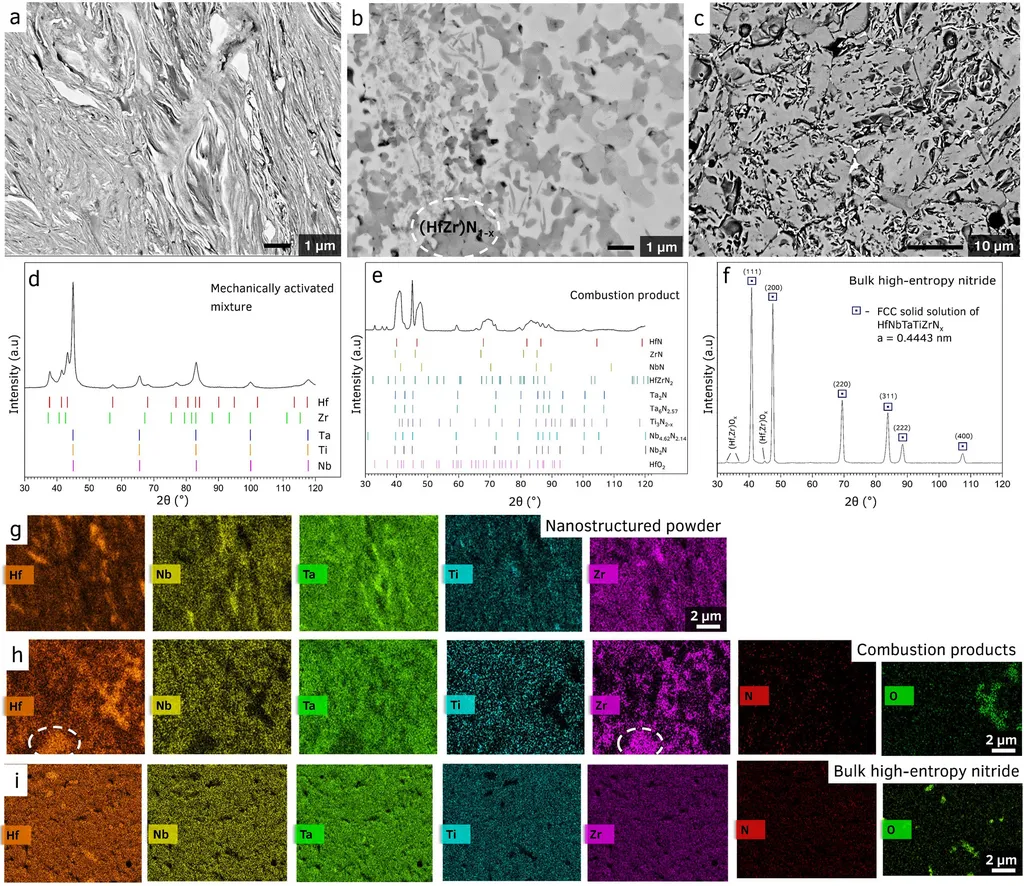In a significant stride towards enhancing the durability of wear-resistant coatings, researchers from the Institute of Materials Science at Technische Universität Dresden and the Fraunhofer Institute for Material and Beam Technology IWS have published a study in the journal *Materials & Design* (translated as *Materials & Design*). The research, led by Martin Zawischa, delves into the damage tolerance of high entropy nitride (HEN) coatings, comparing monolithic and multilayered designs under various loading conditions.
High entropy alloy nitrides are emerging as a promising material class for wear-resistant coatings due to their superior hardness and high-temperature stability. However, the key to their success lies in their damage tolerance—the ability to resist mechanical failure under stress. Zawischa and his team set out to explore this aspect, focusing on three HEN systems: (AlCrTaTiZr)N, (AlCrNbSiTiV)N, and (HfNbTaTiVZr)N, as well as two multilayers, (AlCrNbSiTiV)N/TiN and (HfNbTaTiVZr)N/TiN, against the benchmark (AlTi)N.
The coatings were deposited using cathodic arc evaporation, a technique known for its high deposition rates. The researchers then subjected the coatings to different loading conditions, including in situ tensile tests and scratch tests with small and large indenters. The results revealed that the resistance to mechanical failure can be significantly increased with HEN coatings, but there is no one-size-fits-all solution for damage tolerance.
“Instead of relying solely on intrinsic coating characteristics like fracture toughness or hardness-to-modulus ratio, we need to analyze the composite behavior in the context of the respective load scenario,” Zawischa explained. This nuanced approach is crucial for tailoring coatings to specific applications, particularly in the energy sector where components often face harsh operating conditions.
The study identified the (HfNbTaTiVZr)N coating as the most promising candidate, while (AlCrTaTiZr)N also showed potential due to its highest hardness of 37.7 GPa. The multilayer design, on the other hand, primarily led to a reduction in residual compressive stresses, which proved beneficial in some scenarios but detrimental in others.
The implications of this research are far-reaching, particularly for the energy sector. Wear-resistant coatings are vital for protecting components in power generation, renewable energy, and other industrial applications. By understanding and optimizing the damage tolerance of HEN coatings, industries can enhance the longevity and reliability of their equipment, leading to significant cost savings and improved efficiency.
As Zawischa noted, “This work highlights the importance of considering the specific application when designing and selecting coatings. It’s not just about the material’s properties, but how it behaves in the real-world context.”
Published in *Materials & Design*, this study paves the way for future developments in the field of wear-resistant coatings, offering valuable insights for researchers and industry professionals alike. By embracing a more holistic approach to damage tolerance, the energy sector can look forward to more robust and durable solutions for its most challenging applications.

